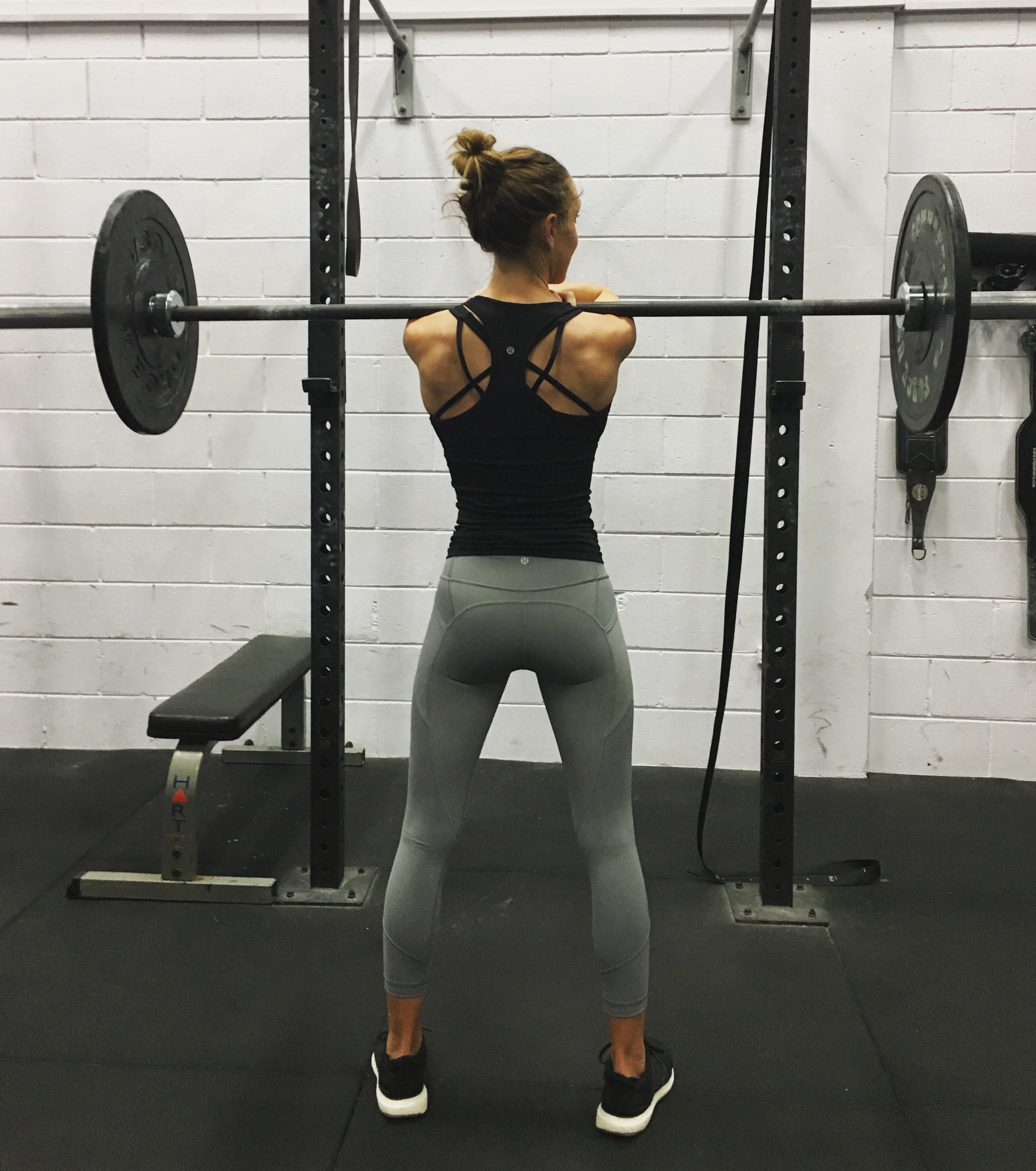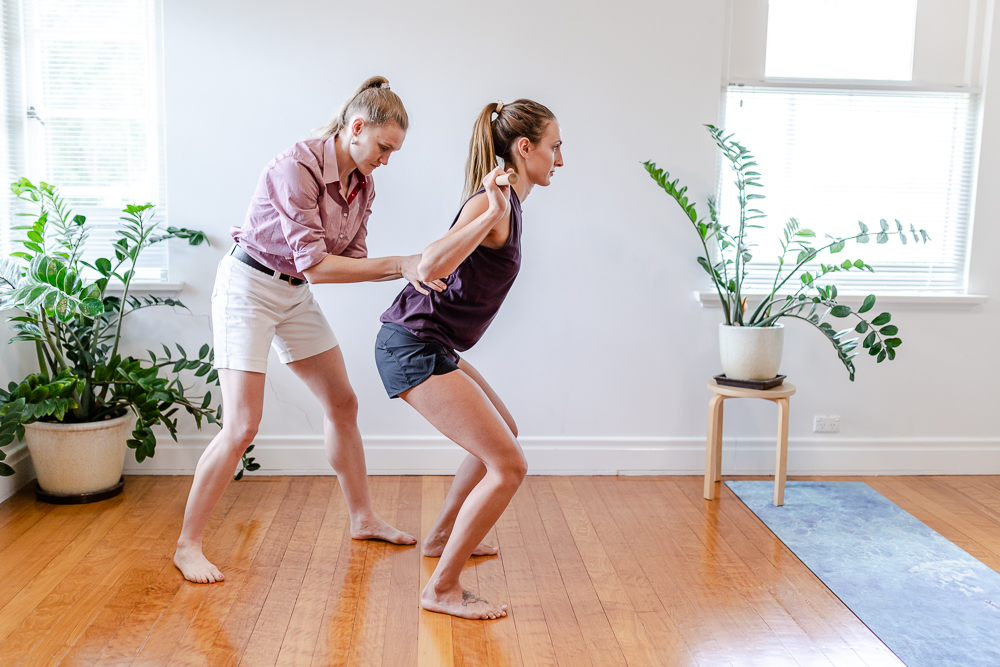Hi everyone! Hannah here again. This time I’m going to be taking you through one of my favourite exercises to do – the Squat. It’s a lot more complex than you think and I’ve spent considerable time trying to get mine right, so I can become stronger and also lessen the risk of injury as I increase weights in the Gym. Here’s what I’ve got to share with you:
What is a squat?
When people think of a squat, often it is of a person struggling underneath a barbell loaded with weight, as they make their way down, ass to grass, and then pushing back up. A squat is so much more than that – a squat is sitting down on the toilet, sitting down at your dinner table, getting yourself down to the floor level to play with the kids, or pick up a coin you dropped, a squat is chair pose in yoga, or your preparatory position to receive a serve in your tennis match. It is a movement that is analyzed so closely and used so widely.
Breaking it down
 When looking at someone’s squat, we break down all the movements a person needs for a comfortable position: ankle, knee, hip, lower back, and mid back mobility, and shoulder and neck positioning. Depending on the end goal of what kind of squat the client wants, we will look at each of these areas because to be able to lift your kid up off the ground, or have a barbell on your back, being limited in one of these areas often puts strain through one of the other areas that you may have more mobility in.
When looking at someone’s squat, we break down all the movements a person needs for a comfortable position: ankle, knee, hip, lower back, and mid back mobility, and shoulder and neck positioning. Depending on the end goal of what kind of squat the client wants, we will look at each of these areas because to be able to lift your kid up off the ground, or have a barbell on your back, being limited in one of these areas often puts strain through one of the other areas that you may have more mobility in.
Refining the technique
Once mobility and movement are improved, at Barefoot, we then incorporate the squat in our beginning work with glute activation and glute motor control. Now that you have the range, we need your body to be able to control it! This is where talk of technique comes into play, as we want it to be positioning that YOUR body is happy with – we work with you to see what ranges we will start at and how you can control each area of your body when lowering into the squat. Yes, a squat can therefore look different for each person because of what makes their body happy. It can also look different because of the end goal of why a person wants to squat.
Maintaining through asymmetry
The squat is a super important position to be able to maintain strength and stability under load, but we also need to be able to squat in asymmetrical positions or spontaneously! All of these are important and areas that we will help you work on!
We can help you
If your squat isn’t working for you, all of us here at Barefoot Physiotherapy would be happy to help. Maybe you’re looking at increasing weight or power, or just wanting to avoid injury through correct technique. As you can see in the picture below, we will have you holding a broom stick and put you through the motions, assisting you to learn how to move correctly with your body. We’ve used this technique many times on many kinds of bodies and we’ve found the benefits to be huge.
Anyway, I hope you’ve found this BLOG to be useful in some kind of way. I’d love to hear your feedback, so feel free to shoot me an email if you’d like hannah@barefootphysiotherapy.com.au







